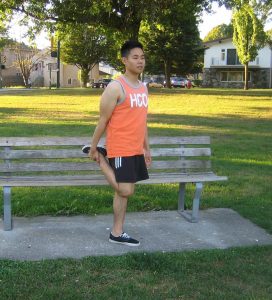Majority of athletes or individuals who are always using their feet typically suffer from leg and ankle pain. The pain can be due to tendinitis in peroneal tendons present in the ankle or the Achilles tendon, shin splints or even calf muscles or ligaments in the ankle that are strained. In some cases, the injury can be severe that it would require surgery. Most of the injuries can be handled with the RICE method that you can learn by enrolling in a first aid course as well as the instructing the individual to perform light exercises.
What are the effects of the RICE method?
Regardless of the origin of the pain, the first aid measure is to instruct the individual to rest in order to prevent aggravating the injury. With enough rest and the application of ice, it will help minimize the pain and inflammation which is the initial phase of the healing process. Take note that ice promotes vasoconstriction which reduces the swelling and aching by decreasing the blood flow and lymph fluid to the area. Ice packs are highly effective for ensuring that the ice is compressed against the affected area. The affected area must also be elevated higher than the heart to minimize the pain and inflammation. Once the RICE method helped minimize the swelling, heat can be utilized to increase the flow of blood to the affected area.
Using medications for leg and ankle pain

Anti-inflammatory medications such as naproxen and ibuprofen can help minimize the pain and inflammation. By combining pain medications and application of ice, it is highly effective for leg and ankle pain. This is achieved by limiting the Cox-2 enzymes and prostaglandins which are released as a natural response of the body to injuries. Topical creams can also be used to help relieve pain. For severe cases of leg and ankle pain, steroids can be prescribed.
Stretching exercise
Stretching exercises can help loosen up tight joints and muscles. It can help alleviate pain and even prepare the muscles for activity. With enough rest and the application of ice, it will help minimize the pain and inflammation which is the initial phase of the healing process. The range of the stretching movements must be limited to movements that will not cause pain. Ankle stretches usually involves moving the foot in various directions and holding the position. The calf muscles can be stretched gradually to help recover from both calf and Achilles tendon pain. Even resistance exercises such as walking, bicycling and light weightlifting can help the individual recover from leg and ankle pain. Always remember that exercise is the best way to increase the flow of blood to the affected area. Additionally, massage is another option in order to overcome pain by helping the tight muscles relax.
When to visit a doctor?
There are cases in which leg and ankle pain is severe. If the individual has difficulty putting weight on the feet or if the swelling does not subside after three days, it is best to consult a doctor. Various treatment options can be used to deal with the issue.
